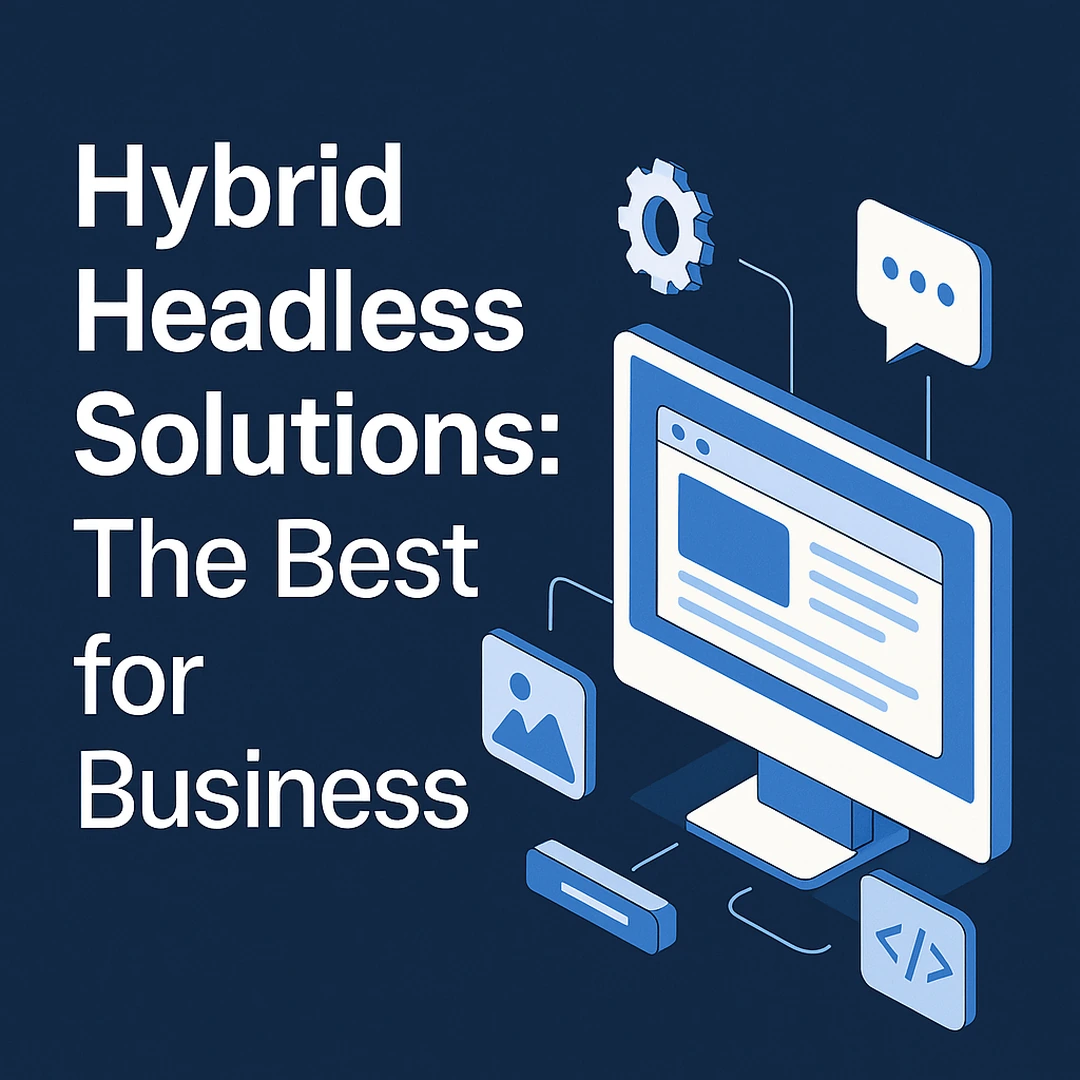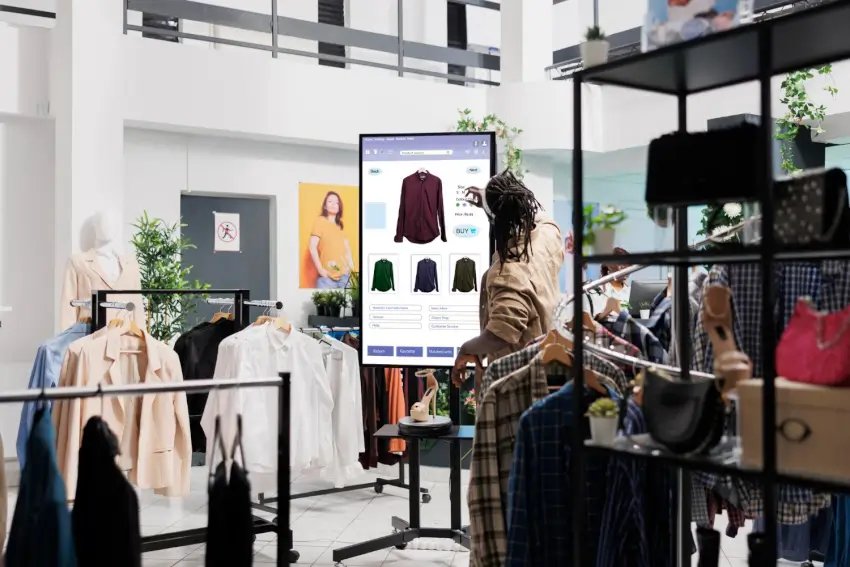Get your free consultation today!
Share with your Colleagues
Categories
ROI Calculator
Moonstone Interactive is the only San Francisco Bay Area web design firm and Internet Marketing expert that offers a free online ROI Calculator
Author: Steve Herz

Table of Contents
- Introduction: Why Hybrid Headless Matters
- Understanding Headless Architecture
- What Makes Hybrid Headless Different?
- Benefits of Hybrid Headless Solutions
- Real-World Example: Omnichannel Retail
- Business Drivers and Scalability
- Future-Proofing with Hybrid Headless
- Challenges to Consider
- Making the Right Choice
- Conclusion
Is Hybrid Headless the Best Solution?

Headless architecture has become one of the most talked-about innovations in digital strategy. By separating the front end from the back end, businesses gain flexibility, scalability, and control over how content is delivered. However, going fully headless can also create challenges in complexity and management. That’s where hybrid headless solutions come in—a balanced approach that blends the agility of headless systems with the familiar usability of traditional CMS platforms.
In this article, we explore what hybrid headless architecture is, the advantages it brings, and how to decide if it’s the right choice for your organization.
Understanding Headless Architecture

A headless CMS separates the presentation layer from backend systems, using APIs to deliver content across multiple channels. This structure enables developers to create customized customer experiences for websites, mobile apps, or even IoT devices without being tied to a single interface.
The benefits are clear: faster development, improved agility, and the ability to scale digital experiences across platforms. Businesses can update user interfaces independently from backend processes, speeding time-to-market and enabling innovation.
However, while headless is powerful, it often requires significant developer involvement and advanced technical resources—barriers that some organizations will need to overcome.
What Makes Hybrid Headless Different?

A hybrid headless solution blends the strengths of both models. Content creators benefit from the intuitive, user-friendly tools of a traditional CMS. At the same time, developers still gain the flexibility of API-driven solutions. Instead of replacing existing systems, businesses can adopt headless features gradually, tailoring the architecture to match their needs.
This dual approach avoids the “all or nothing” tradeoff. It enables businesses to innovate at their own pace, reduce disruption, and maintain the efficiency of workflows that teams already know.
Benefits of Hybrid Headless Solutions

- Flexibility at Your Pace: Companies can transition parts of their operations to headless architecture while retaining traditional core functions, thereby minimizing risk.
- Innovation Without Disruption: Hybrid models allow integration of new technologies without abandoning familiar interfaces.
- Seamless Integration: Platforms like Xperience by Kentico can combine robust CMS features with headless agility for a unified content strategy.
- Consistent Customer Experience: Businesses can manage content centrally while ensuring it’s delivered uniformly across websites, apps, and social channels.
- Cost-Effective Evolution: Phased adoption reduces upfront costs, avoids extensive retraining, and provides a sustainable path for digital transformation.
Real-World Example: Omnichannel Retail

Consider a retailer managing promotions across a website, mobile app, and social platforms. A hybrid headless system lets teams update product details in one place and automatically push consistent content to every channel. This feature not only saves time but also ensures that customers see accurate, up-to-date information, regardless of how they engage.
Such agility enables retailers to quickly respond to shifting trends, launch campaigns more efficiently, and enhance customer loyalty through a seamless omnichannel experience.
Business Drivers and Scalability
.jpg?width=833&height=602)
As organizations grow, their digital ecosystems become more complex. Hybrid Headless solutions scale efficiently by allowing modular expansion. Businesses can increase resources during peak traffic without overhauling infrastructure, supporting both short-term spikes and long-term growth.
The model also supports faster product rollouts, providing companies with a competitive edge in markets where speed-to-market is crucial.
Future-Proofing with Hybrid Headless

Technology evolves rapidly. A hybrid headless approach provides businesses with the flexibility to adopt new tools, platforms, or integrations as they emerge—without requiring the rebuilding of entire systems. This adaptability ensures companies remain competitive while aligning digital strategies with long-term goals.
Challenges to Consider

Hybrid systems are not without hurdles. Managing both traditional and headless elements can add complexity. Integration with existing tools requires careful planning and technical oversight to ensure seamless operation. Businesses should invest in training and governance to ensure teams can manage the hybrid environment effectively.
Making the Right Choice

Hybrid headless solutions are best for businesses seeking:
- Flexibility to balance traditional and modern approaches
- Gradual digital transformation without significant disruption
- Scalable architectures that grow with customer demand
- Faster innovation cycles with manageable costs
If your organization values agility but isn’t ready for the complexity of a fully headless system, hybrid headless could be the ideal path forward.
Conclusion
The choice between traditional, headless, and hybrid systems depends on your business goals, technical capabilities, and growth strategy. Hybrid headless solutions offer a powerful middle ground, providing innovation, scalability, and consistency without the steep learning curve associated with a fully headless approach. For many organizations, this balance delivers precisely what’s needed to thrive in today’s fast-paced digital landscape.
.webp?ext=.webp)
